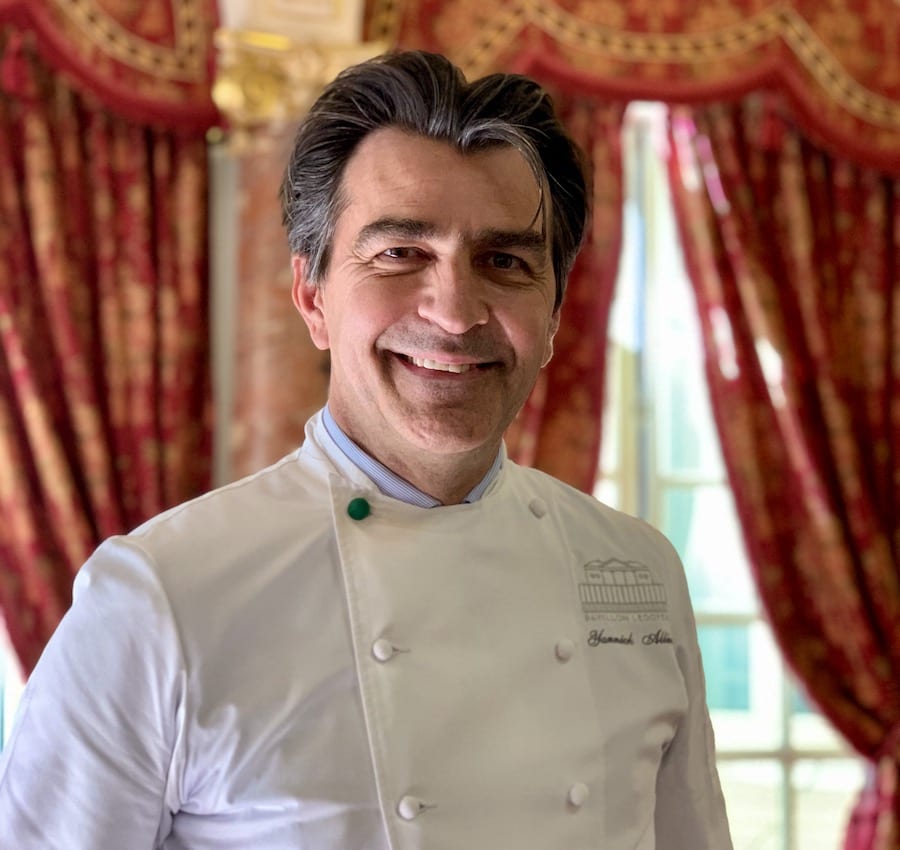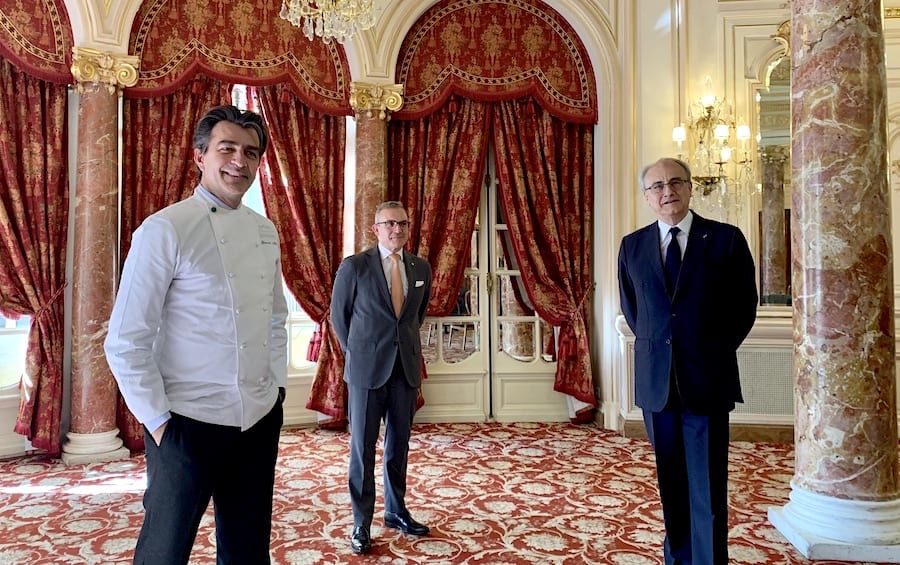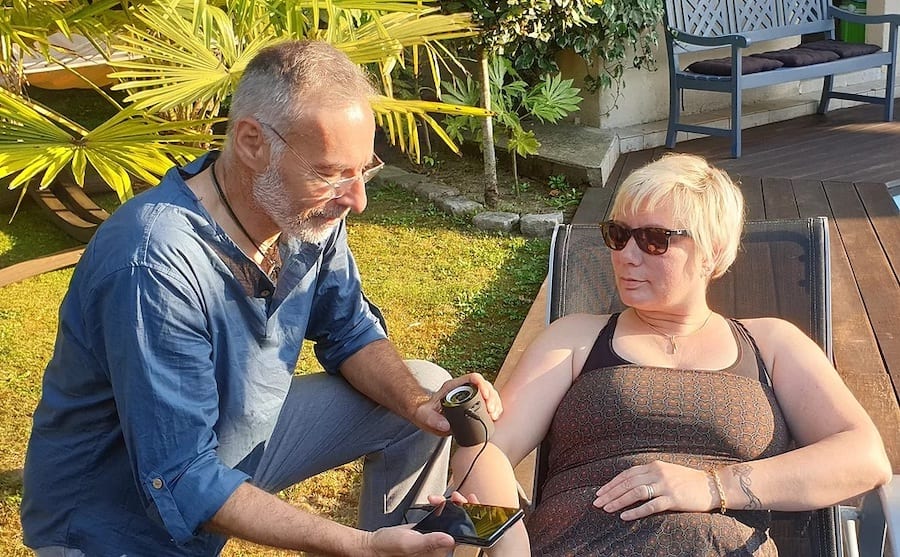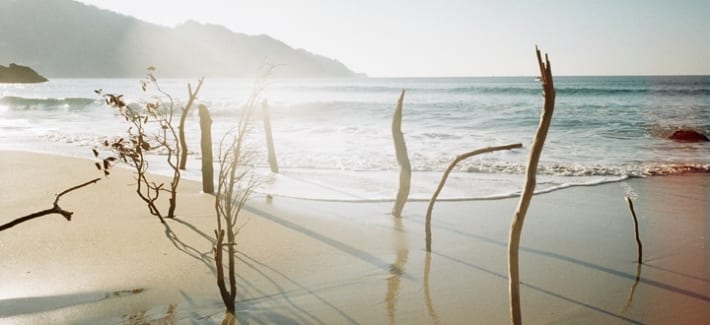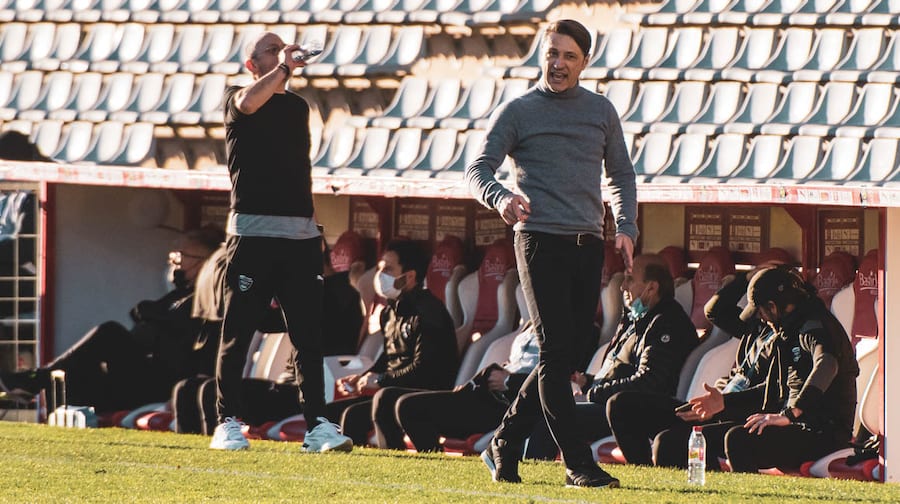Yannick Alleno, holder of nine Michelin stars, will head his first restaurant in Monaco at the Hermitage Hotel, in what can only be described as a major coup for the Principality.
The exciting news was kept tightly under wraps until Monday when, in the Belle Epoque hall of the Hermitage Hotel, Société des Bains de Mer (SBM) Chairman and CEO Jean-Luc Biamonti excitedly revealed to local press the imminent arrival of one of France’s most respected chefs.
“We do not want to sit idly by in this crisis, we want to make sure that Monaco remains a city that is alive,” said Mr Biamonti. “That is why we have decided to take this initiative.”
Yannick Alleno made his debut at the Vistamar in July 2020 when he and his team from Paris cooked for the ‘Star Dining’ concept championed by Hermitage Managing Director Louis Starck.
It was a pivotal moment for both Alleno and Starck and set them on a path that will, in a few short months, finally align their futures and propel the one-starred Vistamar restaurant further on to the culinary stage.
“I think we both felt a strong friendship last summer, and it was an important moment for Louis Starck to bring people back to the terrace of the Hermitage,” Chef Yannick Alleno told Monaco Life. “So, we started to talk to Jean-Luc Biamonti about the future, and I am just so proud to now be a part of the Hermitage.”
Yannick Alleno is one of the world’s most respected and charming chefs. He heads the Pavillon Ledoyen in Paris, which alone features three of his starred restaurants: Pavyllon, which received its first Michelin star this year just months after opening, L’Abysse sushi restaurant, which was elevated to two stars, and three Michelin starred Alléno Paris, boasting some of the capital’s most sought after tables.
He also has the three Michelin starred Hôtel Le Cheval Blanc in Courcheval, bringing his total number of Michelin stars to nine. Then there are a host of other restaurants in Marrakech, Dubai and Korea.
So why did he decide to add Monaco to the list?
“I think a place like Monaco needs to be on the gastronomic map, it has to be in the game,” said Chef Alleno to Monaco Life. “Plus, I love Monaco and the French Riviera – the history, the architecture, the art… it is such a unique place with very special vibes.”
The Vistamar will be rebranded Yannick Alléno at the Hôtel Hermitage Monte-Carlo, and the current team will stay on board, including Head Chef Jean-Phillipe Borro.
Yannick Alleno says a cohesion between the two teams is vital to its success.
“It will not be team Alleno against team Vistamar,” he says. “They are happy to see us coming because any reason to preserve staff, particularly right now, is important and courageous. I am very proud to be part of the team. I know we will do a great job.”
The first stage of the transition will include a renovation of the terrace restaurant and a new cuisine. Yannick Alleno will be offering his guests something different while utilising fresh Mediterranean ingredients, adding the famous “Alleno touch”.
That, of course, includes his precious modern sauces created from “extractions”, and his revolutionary sugar-free desserts.
The second shift in 2022 will involve the installation of a glass-house on the terrace, reminiscent of Alleno’s Pavyllon in Paris, and a full interior redesign. The restaurant will have then completed its rebirth and be named Pavyllon at the Hotel-Hermitage Monte-Carlo.
First, Yannick Alleno and the team at the Hermitage hope to open to the public in early April, provided the Covid situation doesn’t derail that plan.
But as any fan of this dynamic, modern chef will tell you, what ever the date, it will be a momentous occasion for the Principality.
Top photo of Yannick Alleno by Monaco Life
Related stories:
Interview: Leader of ‘Modern Cuisine’ Yannick Alléno
Leader of ‘Modern Cuisine’ to head Monaco restaurant
